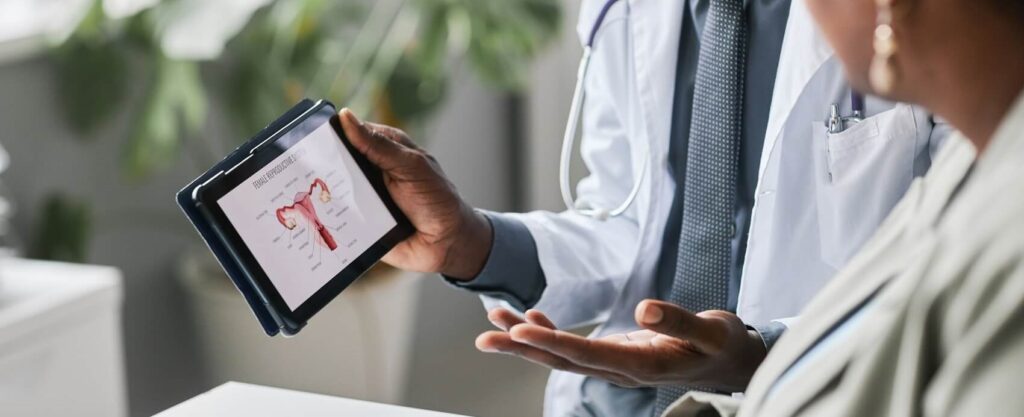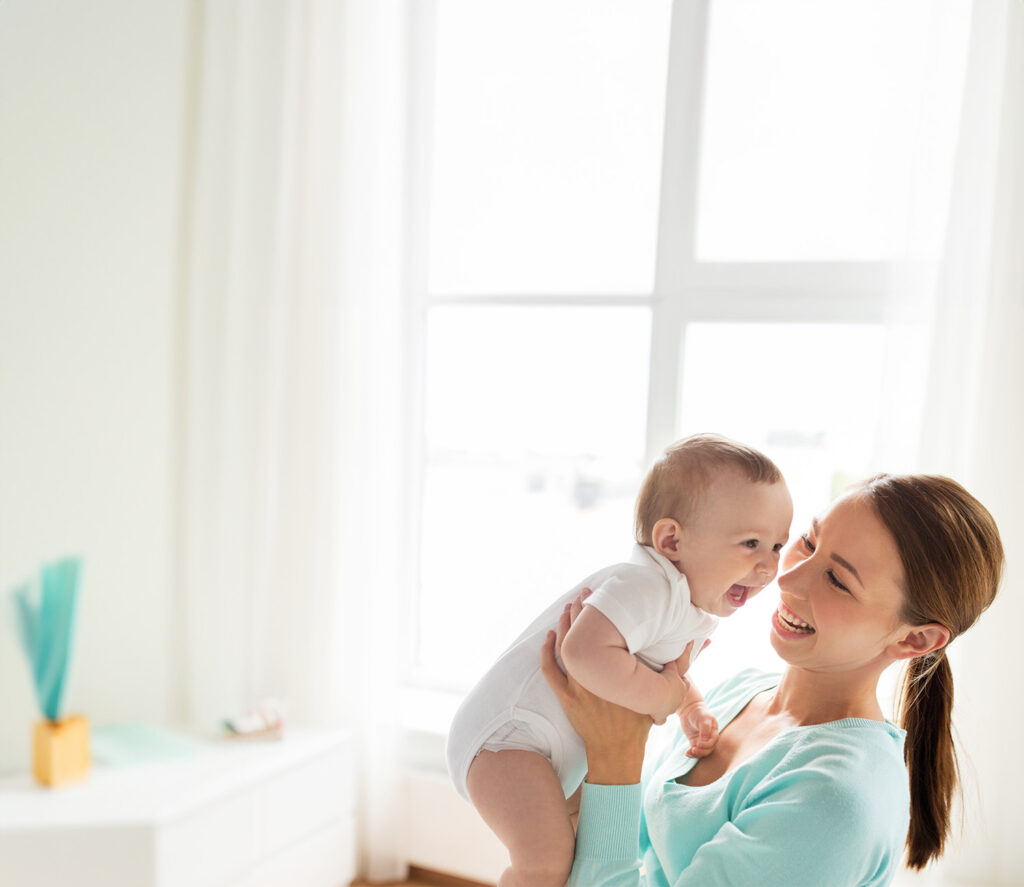
Ovulation is the process during which the ovary releases a mature egg each month during a woman’s natural menstrual cycle. The egg then stays in the fallopian tube for 12-24 hours to be fertilized by sperm.
If fertilization does not occur, then the egg is discharged through the vagina. If you’re trying to become pregnant, your best chance of doing so is to have sperm present in the uterus during ovulation. Sperm can survive in the fallopian tubes for up to five days.
At First Fertility, we help individuals start or grow their families. For many, this journey begins with learning how to identify when ovulation is happening.
When Does Ovulation Happen?
Every individual is different, but the typical menstrual cycle is around 21-35 days in length. For an average 28-day menstrual cycle, ovulation will often happen around day 14, approximately two weeks following the first day of your last menstrual period.
Keep in mind that the first day of menstruation is considered the first day of the menstrual cycle. Knowing when ovulation occurs after your period is critical for conception.
How to Tell When You’re Ovulating
While ovulation typically occurs on day 14 of the average 28-day cycle, that’s not definitively true for everyone who menstruates. Hormone levels and even stress or travel can affect or delay ovulation. In addition to counting the days from menstruation, you can identify when ovulation is going to occur by looking for the following signs:
Changes to Vaginal Secretions
Right around the time of ovulation, vaginal secretions become thick and sticky. These secretions help sperm successfully reach and fertilize an egg. After ovulation, this cervical mucus will dry up or even disappear until menstruation begins.
Rise in Basal Body Temperature
Based on hormonal balances within the body, an individual’s temperature typically changes from pre-ovulation to post-ovulation. Following ovulation, the body temperature maintains a sustained rise of at least three-tenths of a degree above the pre-ovulation temperature.
Check your basal body temperature (BBT) by using a BBT thermometer to record your temperature every morning before getting out of bed. For the best readings, take this temperature around the same time every day.
Women tend to be most fertile during the two or three days prior to a rise in BBT.
Ovulation Kit
Ovulation kits are available over the counter at most convenience stores. They use strips to test your urine for the surge of hormones that happens before ovulation. These can help you identify when you’re most likely to ovulate within a range of approximately 36 hours.
Other Signs
Some women experience other signs that can indicate ovulation, like breast pain or a dull pain in the pelvic area, which is called Mittelschmerz. These signs are typically unique to each individual.
When Does Ovulation Not Happen?
While most women of childbearing age will ovulate regularly each month, there are a few instances during which ovulation will not happen. These include:
- Hormonal contraception (even if you have a period)
- Post-menopause
- Very low body weight or inadequate nourishment
- Excessive exercise
- Illness
- Pregnancy
- Polycystic Ovary Syndrome (PCOS)
Ovulation needs to occur for pregnancy to happen because sperm need a mature egg to fertilize. If you want to grow your family and are experiencing any of the above, discuss your options with your ObGyn or a reproductive endocrinologist (REI).
Learn More About Ovulation with First Fertility Today
Now that you know more about what ovulation is, you can learn more about your own fertility. Schedule an appointment if you want to find out when/if you’re ovulating and how to improve your chances of conceiving.
Any clinic across the country that’s part of the First Fertility family has fertility specialists who can help you understand your body and ovulation. Book an appointment at your nearest First Fertility clinic location today!



